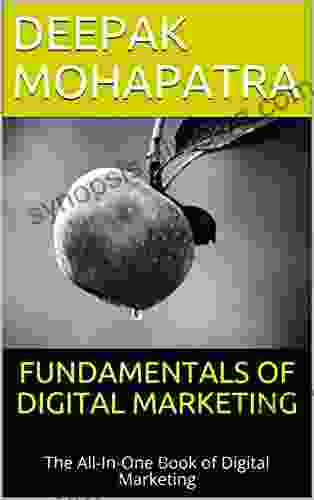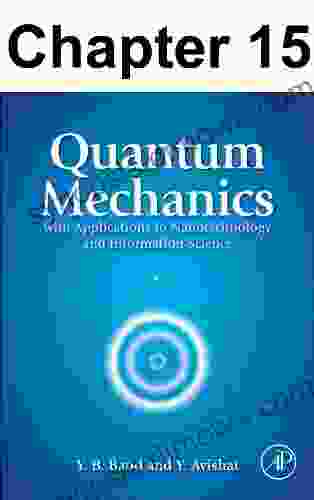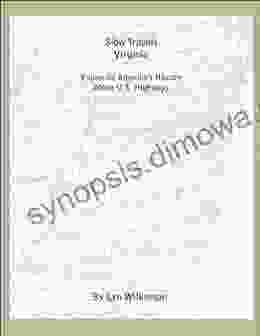Chapter 015: Unveiling the Mysteries of Density Functional Theory with Wil Schilders

4.5 out of 5
| Language | : | English |
| File size | : | 3853 KB |
| Text-to-Speech | : | Enabled |
| Enhanced typesetting | : | Enabled |
| Print length | : | 56 pages |
| Screen Reader | : | Supported |
Density Functional Theory (DFT) is a powerful computational technique used to calculate the electronic structure of atoms, molecules, and materials. It is based on the Hohenberg-Kohn theorem, which states that the ground-state energy of a system is a unique functional of the electron density. This means that all the properties of a system can be determined by knowing the electron density.
DFT is a computationally demanding technique, but it is much less expensive than other methods, such as Hartree-Fock theory. This makes it a popular choice for studying large systems, such as proteins and materials.
The Hohenberg-Kohn Theorem
The Hohenberg-Kohn theorem is the foundation of DFT. It states that the ground-state energy of a system is a unique functional of the electron density. This means that all the properties of a system can be determined by knowing the electron density.
The Hohenberg-Kohn theorem can be proven using the variational principle. The variational principle states that the ground-state energy of a system is the lowest energy that can be obtained by any trial wave function. A trial wave function is a function that satisfies the Schrödinger equation.
The Hohenberg-Kohn theorem can be used to derive the Kohn-Sham equations. The Kohn-Sham equations are a set of self-consistent equations that can be used to calculate the electron density of a system.
The Kohn-Sham Equations
The Kohn-Sham equations are a set of self-consistent equations that can be used to calculate the electron density of a system. The Kohn-Sham equations are:
[-\frac{1}{2}\nabla^2 + V_\text{eff}(\mathbf{r})]\phi_i(\mathbf{r}) = \varepsilon_i\phi_i(\mathbf{r})
where:
* $\phi_i(\mathbf{r})$ is the i-th Kohn-Sham orbital * $\varepsilon_i$ is the i-th Kohn-Sham orbital energy * $V_\text{eff}(\mathbf{r})$ is the effective potential
The effective potential is a functional of the electron density. It includes the external potential, which is the potential due to the nuclei, and the exchange-correlation potential, which is the potential due to the interactions between the electrons.
The Kohn-Sham equations can be solved self-consistently. This means that the electron density is used to calculate the effective potential, which is then used to calculate the electron density. This process is repeated until the electron density and the effective potential are consistent.
Applications of DFT
DFT is used to study a wide variety of systems, including atoms, molecules, and materials. DFT is used to calculate the ground-state energy, electron density, and other properties of these systems.
DFT is used in many different fields of science, including chemistry, physics, and materials science. DFT is used to study a wide variety of problems, including the following:
- The electronic structure of atoms and molecules
- The properties of materials
- The reactions of molecules
- The design of new materials
Strengths and Limitations of DFT
DFT is a powerful tool for studying the electronic structure of atoms, molecules, and materials. However, DFT has some strengths and limitations.
The strengths of DFT include the following:
- DFT is a computationally efficient technique.
- DFT can be used to study large systems.
- DFT can be used to calculate a wide variety of properties.
The limitations of DFT include the following:
- DFT is not always accurate.
- DFT can be difficult to apply to systems with strong correlation effects.
DFT is a powerful computational technique used to study the electronic structure of atoms, molecules, and materials. DFT is based on the Hohenberg-Kohn theorem, which states that the ground-state energy of a system is a unique functional of the electron density. This means that all the properties of a system can be determined by knowing the electron density.
DFT is a computationally demanding technique, but it is much less expensive than other methods, such as Hartree-Fock theory. This makes it a popular choice for studying large systems, such as proteins and materials.
4.5 out of 5
| Language | : | English |
| File size | : | 3853 KB |
| Text-to-Speech | : | Enabled |
| Enhanced typesetting | : | Enabled |
| Print length | : | 56 pages |
| Screen Reader | : | Supported |
Do you want to contribute by writing guest posts on this blog?
Please contact us and send us a resume of previous articles that you have written.
 Book
Book Novel
Novel Page
Page Chapter
Chapter Text
Text Story
Story Genre
Genre Reader
Reader Library
Library Paperback
Paperback E-book
E-book Magazine
Magazine Newspaper
Newspaper Paragraph
Paragraph Sentence
Sentence Bookmark
Bookmark Shelf
Shelf Glossary
Glossary Bibliography
Bibliography Foreword
Foreword Preface
Preface Synopsis
Synopsis Annotation
Annotation Footnote
Footnote Manuscript
Manuscript Scroll
Scroll Codex
Codex Tome
Tome Bestseller
Bestseller Classics
Classics Library card
Library card Narrative
Narrative Biography
Biography Autobiography
Autobiography Memoir
Memoir Reference
Reference Encyclopedia
Encyclopedia David B Williams
David B Williams R Duncan Luce
R Duncan Luce Robert C Ward
Robert C Ward David W Gates Jr
David W Gates Jr De Nesha Diamond
De Nesha Diamond Joseph Jaworski
Joseph Jaworski David Bailin
David Bailin Joseph Pennell
Joseph Pennell Isha Panesar
Isha Panesar Neale Martin
Neale Martin David Lyon
David Lyon Deauna Danielle
Deauna Danielle Deepa Babu
Deepa Babu Pat Schories
Pat Schories Dayna Kay Johnson
Dayna Kay Johnson Dean Ellis Kohler
Dean Ellis Kohler Dean Corbae
Dean Corbae David Grimstone
David Grimstone Thomas D Peacock
Thomas D Peacock Kulwant Marwal
Kulwant Marwal
Light bulbAdvertise smarter! Our strategic ad space ensures maximum exposure. Reserve your spot today!

 Robert Louis StevensonAvitopia: Birds of Vanuatu - Unveiling the Enchanting Aviary of the Pacific
Robert Louis StevensonAvitopia: Birds of Vanuatu - Unveiling the Enchanting Aviary of the Pacific Jesus MitchellFollow ·8.3k
Jesus MitchellFollow ·8.3k Lord ByronFollow ·13.6k
Lord ByronFollow ·13.6k Damon HayesFollow ·19k
Damon HayesFollow ·19k Yasushi InoueFollow ·4.9k
Yasushi InoueFollow ·4.9k Theo CoxFollow ·9.5k
Theo CoxFollow ·9.5k Gerald BellFollow ·18.3k
Gerald BellFollow ·18.3k Chris ColemanFollow ·5k
Chris ColemanFollow ·5k Duane KellyFollow ·10.4k
Duane KellyFollow ·10.4k

 Aron Cox
Aron CoxMastering Project Management: The Ultimate Guide to...
In today's competitive...

 Dominic Simmons
Dominic SimmonsLet's Build Sue Fliess: Unleash the Polychrome Master...
Chapter 1: The...

 Mason Powell
Mason PowellMaster the Digital Marketing Landscape: Fundamentals of...
In the age of digital...

 Aubrey Blair
Aubrey BlairUncover the Secrets of Ancient Blades and Enchanting...
Embark on an Enchanting Journey into the...

 Shannon Simmons
Shannon SimmonsUnleash the Spooktacular with Spooky Crochet Tutorials...
Prepare to be spooked...

 Cade Simmons
Cade SimmonsImmerse Your Little Ones in a World of Enchantment with...
Nursery rhymes have forever ignited the...
4.5 out of 5
| Language | : | English |
| File size | : | 3853 KB |
| Text-to-Speech | : | Enabled |
| Enhanced typesetting | : | Enabled |
| Print length | : | 56 pages |
| Screen Reader | : | Supported |










